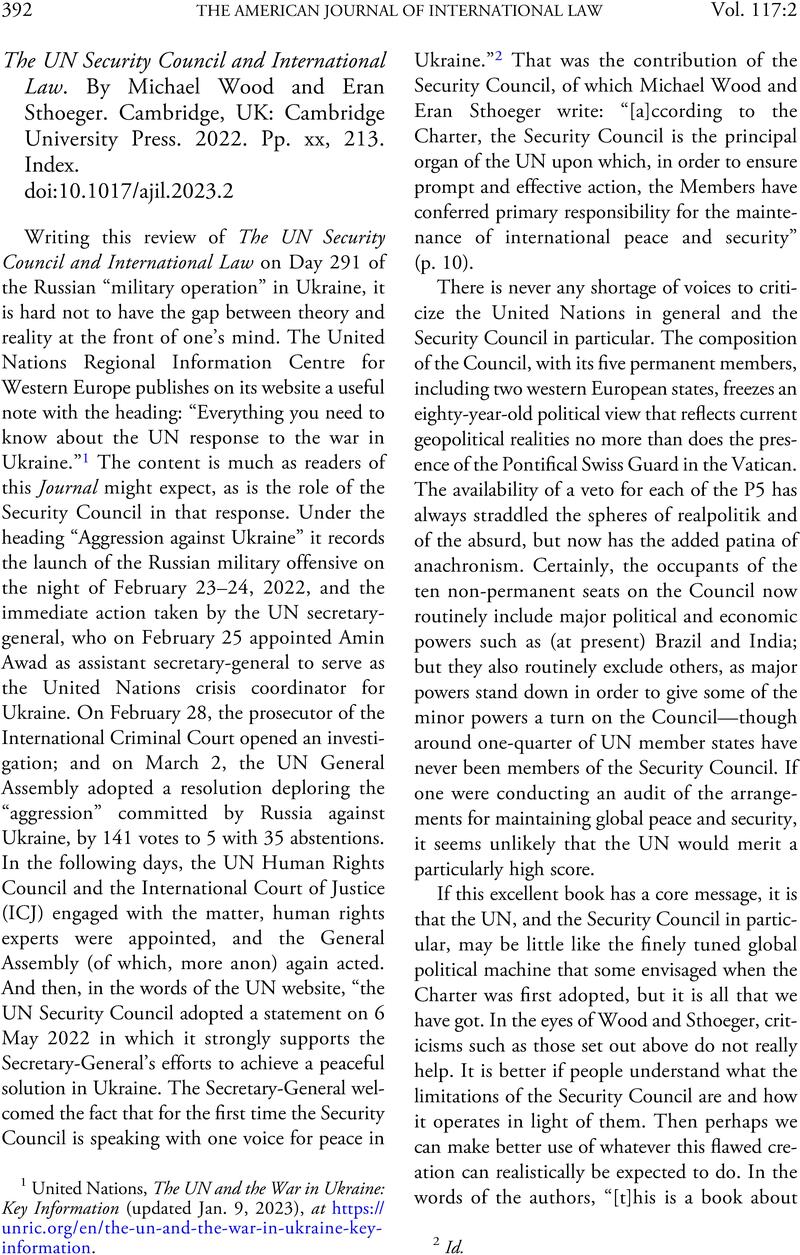No CrossRef data available.
Published online by Cambridge University Press: 13 April 2023

1 United Nations, The UN and the War in Ukraine: Key Information (updated Jan. 9, 2023), at https://unric.org/en/the-un-and-the-war-in-ukraine-key-information.
2 Id.